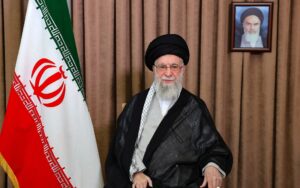Israel’s multifaceted campaign against Iran’s nuclear programme exposes significant strategic, operational, and resource constraints. Tel Aviv lacks the military assets to directly neutralise Iran’s most fortified nuclear sites, forcing reliance on limited kinetic strikes, cyber operations, and psychological warfare aimed at degrading Iran incrementally. However, this strategy carries grave risks, including regional escalation and wider international destabilisation. Attempts to assassinate Supreme Leader Ali Khamenei or provoke American military intervention are fraught with danger and likely to backfire. Meanwhile, Israel’s military sustainability is compromised by finite indigenous resources and increasing dependency on US support, which itself is impacting European security commitments. The geopolitical stakes are immense, requiring a measured, sober appraisal rather than impetuous action.
The Limits of Israeli Military Power: Operational and Tactical Realities
Israel’s military, though among the most advanced in the Middle East, confronts serious limitations when it comes to eliminating Iran’s nuclear infrastructure. Facilities like Fordow and Natanz are constructed deep underground, encased in reinforced concrete, and shielded by natural geological formations. These sites are engineered not only to resist conventional aerial bombardment but also to absorb and mitigate damage from specialised bunker-busting ordnance.
The Israeli Air Force operates a modern fleet including stealth-capable F-35I “Adir” fighters, F-15s, and F-16s, all equipped with precision-guided munitions. Yet these weapons systems were never designed to penetrate subterranean nuclear facilities. The United States possesses limited stockpiles of Massive Ordnance Penetrators (MOPs)—bombs weighing over 30,000 pounds capable of penetrating tens of metres of reinforced concrete. However, these are rarely deployed, require extensive preparation and specialised delivery platforms, and their use is tightly controlled at the highest political levels.
Logistically, striking Iran’s heartland poses challenges. Israeli jets would face the necessity of flying hundreds of kilometres through heavily defended airspace, with multiple overlapping layers of Iranian surface-to-air missile (SAM) batteries, electronic warfare assets, and radar networks. Overflight permissions through neighbouring countries many hostile or neutral are unobtainable, forcing long, circuitous flight routes with limited refuelling options and heightened risk.
Comparisons with prior Israeli strikes such as Operation Opera (1981) and Operation Orchard (2007) highlight the challenge. Those attacks targeted relatively immature nuclear sites, less hardened and located in geopolitically different contexts. The current Iranian facilities have been extensively hardened, camouflaged, and dispersed, complicating any single, decisive strike.
Further, intelligence remains imperfect. Accurate real-time targeting is necessary to ensure a strike’s success and minimise collateral damage, but Iran’s robust counterintelligence and deception efforts complicate such efforts.
A Psychological War of Attrition: Hybrid Tactics and Their Limitations
With a knockout strike out of reach, Israel’s strategy has evolved towards a form of hybrid warfare combining sabotage, cyberattacks, covert operations, and limited kinetic strikes designed to harass and disrupt Iran’s nuclear programme incrementally. The Stuxnet cyberattack (discovered in 2010) remains a textbook example of this approach, reportedly delaying Iranian centrifuge development by years.
More recent operations have included the targeted killings of prominent Iranian nuclear scientists and IRGC commanders, bombings of logistical hubs, and attacks on energy infrastructure. These actions aim not only to degrade capabilities but to instil a pervasive sense of insecurity within the Iranian elite and wider population.
Psychological warfare is a double-edged sword. While creating disruption and doubt, it can also provoke rally-round-the-flag effects, strengthening nationalist and regime-supporting sentiments. Iran’s regime has responded by intensifying internal security measures, cracking down on dissent, and accelerating efforts to indigenise critical technologies.
Internationally, attacks on civilian infrastructure raise serious legal and moral questions. Such tactics risk alienating global opinion and complicate diplomatic efforts, potentially undermining Israel’s standing in international fora.
This phase of attrition also imposes a drain on Israel’s military and intelligence resources, requiring constant vigilance and preparation against Iranian countermeasures, including retaliatory attacks against Israeli or Jewish targets abroad.
The Myth of the ‘Decapitation Solution’: Political and Strategic Implications
Suggestions by Israeli political leaders that assassinating Supreme Leader Ali Khamenei could resolve the nuclear impasse are strategically naïve and operationally fraught. Iran’s political system, while heavily centred on the Supreme Leader’s authority, incorporates multiple redundancies and a complex network of institutions designed to ensure continuity of governance.
The Assembly of Experts, a clerical body, would appoint a new Supreme Leader in the event of Khamenei’s death. Meanwhile, the Revolutionary Guards and intelligence agencies command deep loyalty and operational independence, capable of coordinating retaliatory measures and ensuring regime survival.
The assassination of General Qasem Soleimani in January 2020 provides a cautionary precedent. Instead of weakening the IRGC’s operational capabilities, the killing hardened Iranian resolve, prompted retaliatory missile strikes on US bases in Iraq, and led to increased proxy attacks in the region.
A similar approach targeting Khamenei could produce a far graver backlash. Such a high-profile strike risks mobilising disparate Iranian factions, uniting moderates and hardliners alike behind a common cause. It could catalyse rapid nuclear weapons development as an existential deterrent.
Moreover, the regional repercussions would be severe. Iran’s allies, including Hezbollah in Lebanon, various militias in Iraq, and Houthi forces in Yemen, could escalate attacks on Israeli and Western interests, opening multiple conflict fronts.
Dragging Washington into the Fire: The US Role and Its Dilemma
Israel’s strategic reliance on American military and diplomatic backing remains paramount. The US is Israel’s primary security guarantor, supplying advanced weaponry, intelligence sharing, and diplomatic shielding in international bodies.
However, Washington is increasingly cautious about renewed entanglement in Middle Eastern conflicts. The Biden administration balances competing global priorities: managing the war in Ukraine, countering China’s rise, and maintaining alliances in the Indo-Pacific region.
Washington has expressed support for diplomatic efforts to revive the Iran nuclear deal (JCPOA), viewing it as the most viable non-military path to curb Iranian nuclear progress. Israel’s escalating military actions and vocal threats risk forcing the US into a military confrontation for which it may not be politically prepared.
The prospect of US direct involvement raises troubling questions: how deeply would American forces commit? Would Congress support new Middle East military engagements? How would regional actors and global powers react?
Israel’s attempts to provoke US intervention could backfire if Washington opts for restraint, leaving Tel Aviv isolated or compelling it to act unilaterally with potentially catastrophic consequences.
The Illusion of Strategic Sustainability: Resource Constraints and Wider Impacts
Israel’s military capacity, though advanced, is not unlimited. Its multi-layered air defence system comprising Iron Dome, David’s Sling, and the Arrow missile represents a costly technological achievement, reliant on finite stockpiles of interceptor missiles. These systems require ongoing replenishment of highly specialised missiles, each costing tens of thousands of pounds.
Unlike many states with access to large, diverse defence procurement options, Israel depends heavily on its indigenous defence industry for key components, making it vulnerable to protracted high-intensity conflict depletion.
The recent US decision to redirect munitions and air defence systems such as THAAD from Ukraine to Israel reveals a complex web of global military logistics and alliances. While providing essential support to Israel, it simultaneously reduces NATO’s overall air defence capacity, causing alarm among European allies amid ongoing tensions with Russia.
This interconnectedness demonstrates how the Israeli-Iranian conflict is not isolated but affects the broader balance of global security. It also highlights the risks of strategic overstretch for the US, which is already heavily engaged across multiple theatres.
Domestically, the financial cost to Israel is substantial. Sustained military campaigns require massive budgetary allocations, diverting funds from economic and social development. Public opinion may harden as conflict drags on, complicating political leadership’s ability to sustain aggressive policies.
Regional and Global Geopolitical Stakes: Wider Repercussions
The Israeli-Iranian confrontation forms part of a wider geopolitical chessboard. Iran’s influence extends across Lebanon, Syria, Iraq, and Yemen through its network of proxy militias and allied governments. An escalation threatens to engulf multiple theatres simultaneously.
Regional powers including Saudi Arabia, the United Arab Emirates, and Turkey view Iran as a strategic competitor but remain wary of broad instability that could disrupt energy markets and economic recovery.
Russia and China, while opposed to US dominance, prefer to avoid direct conflict. Instead, they exploit tensions to expand their influence, complicate Western unity, and promote alternative power structures.
The proliferation risks are significant. An emboldened Iran with nuclear weapons capability could trigger a Middle Eastern arms race, encouraging states such as Saudi Arabia and Egypt to pursue their own nuclear programmes, undermining decades of non-proliferation efforts.
Global oil markets, already volatile, would react sharply to regional instability, with consequences for the world economy. Maritime chokepoints such as the Strait of Hormuz could become flashpoints, threatening critical energy supplies.
Prospects for Diplomatic Resolution and Strategic Prudence
Despite the bleak outlook, diplomatic avenues remain vital. The JCPOA framework, though imperfect, provides a basis for negotiations to verifiably limit Iran’s nuclear programme in exchange for sanctions relief.
Regional dialogues involving Gulf states, Iran, and external powers offer potential pathways to reduce tensions and address broader security concerns.
For Israel, strategic prudence demands recognising its own operational limits and avoiding actions that risk uncontrolled escalation. International partnerships, intelligence sharing, and coordinated diplomacy are indispensable.
Navigating a Precarious Future
Israel’s efforts to curtail Iran’s nuclear ambitions illustrate a complex interplay of military capability, political will, resource constraints, and global geopolitics. While harassing strikes and psychological warfare have some effect, they fall short of decisive solutions and risk entrenching conflict.
The notion of “decapitating” Iran’s leadership is dangerously simplistic and strategically hazardous. The hope of compelling US military intervention may prove illusory and costly.
Israel’s finite resources, coupled with global shifts in military commitments, call for a sober reassessment of strategy. The risk of regional conflagration is real, with consequences far beyond the Middle East.
A measured approach, combining realistic military planning, diplomatic engagement, and alliance management, offers the best hope to navigate this perilous juncture.
References:
- Cordesman, A.H. (2023) Iran’s Developing Military Capabilities and Israel’s Strategic Options. CSIS.
- Eisenstadt, M. (2022) Deterrence and Decision: Strategic Options for Israel. The Washington Institute.
- International Institute for Strategic Studies (IISS) (2024) Military Balance 2024.
- Katzman, K. (2023) Iran’s Nuclear Program: Status and Policy Choices. Congressional Research Service.
- Talmor, D. (2024) ‘Israel’s Psychological Warfare Strategy’, Haaretz, 17 May.
- Defense News (2024) ‘US Diverts Munitions from Ukraine to Israel Amid Conflict Surge’, DefenseNews.com, 6 December.
- NATO Defence College (2024) Strategic Overstretch: Western Defence Stocks under Pressure, Rome.
- Cordesman, A.H. (2021) The Middle East Strategic Balance: Iran, Israel, and the Gulf, CSIS.
- Perry, W.J. (2023) The Iran Nuclear Crisis: A Historical Overview, Stanford University Press.
- International Crisis Group (2024) The Middle East’s Nuclear Dilemma: Risks and Opportunities, Brussels.

Amir Erez is a mission-driven OSINT Data Analyst specialising in defence and security intelligence, with deep expertise in open-source intelligence gathering, multilingual media analysis, and threat monitoring. Leveraging advanced data analytics, geospatial tools, and social media intelligence (SOCMINT), he delivers timely insights on emerging threats and real-time developments across South Asia and the Middle East/North Africa. Amir holds a Master’s degree in Strategic Studies from the Department of Military Science at Stellenbosch University, South Africa, blending academic rigour with operational insight to support defence and national security decision-making.



